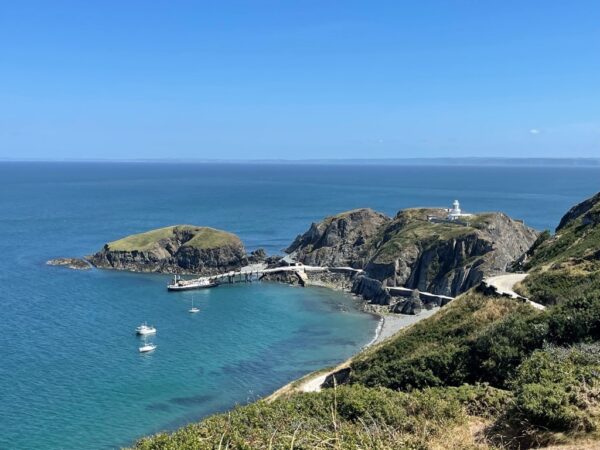Over 40,000 rare seabirds now call Lundy home, the highest number since the 1930s.
Over 80% of the global population of Manx Shearwaters breed on UK islands yet there were only 297 pairs on Lundy in 2001. Puffins were near to extinction on the island and urgent action was needed to make the habitat safer for the rare breeding seabirds. The national census survey in 2000 found that the seabird population on Lundy had plummeted, with only 7,351 birds remaining.
As one of England’s largest seabird colonies, Lundy now supports 95% of England’s breeding Manx Shearwaters, with 25,000 individuals recorded as well as 1,335 puffins and over 150 pairs of breeding storm petrels, a species that first arrived on the Island in 2014 following conservation efforts.
Strong partnership
In 2002, a partnership of the RSPB, the National Trust, the Landmark Trust and Natural England was formed to restore the seabird populations. Evidence from other important seabird islands revealed that the biggest threat to burrow nesting birds such as Manx Shearwaters and Puffins on Lundy was predation of the eggs and chicks by rats. The rats were imported unwittingly on ships visiting the island or from shipwrecks and following careful conservation work, Lundy was finally declared rat free in 2006.
Since then, ongoing biosecurity work to stop rats from returning to the island on boats, and regular monitoring, has been tracking the progress of the seabird colony on Lundy, which has gone from strength to strength. It is now internationally important for breeding birds and one of England’s largest seabird colonies.
Derek Green, Lundy General Manager, said: ‘We’re delighted by the dramatic increase of seabirds on Lundy in recent years. This success is a real testament to collaborative efforts for conservation and we extend our thanks to our partners involved. Coming just months after the island’s re-admission to the Bird Observatories Network, these new figures recognise Lundy’s ever-growing importance nationally and for ornithological research. Conservation is at the heart of everything we do on the island and we look forward to continuing to nurture this very special place for future generations to enjoy.’
Further information on this story can be read in The Daily Telegraph, Inside Ecology and from the Landmark Trust.
